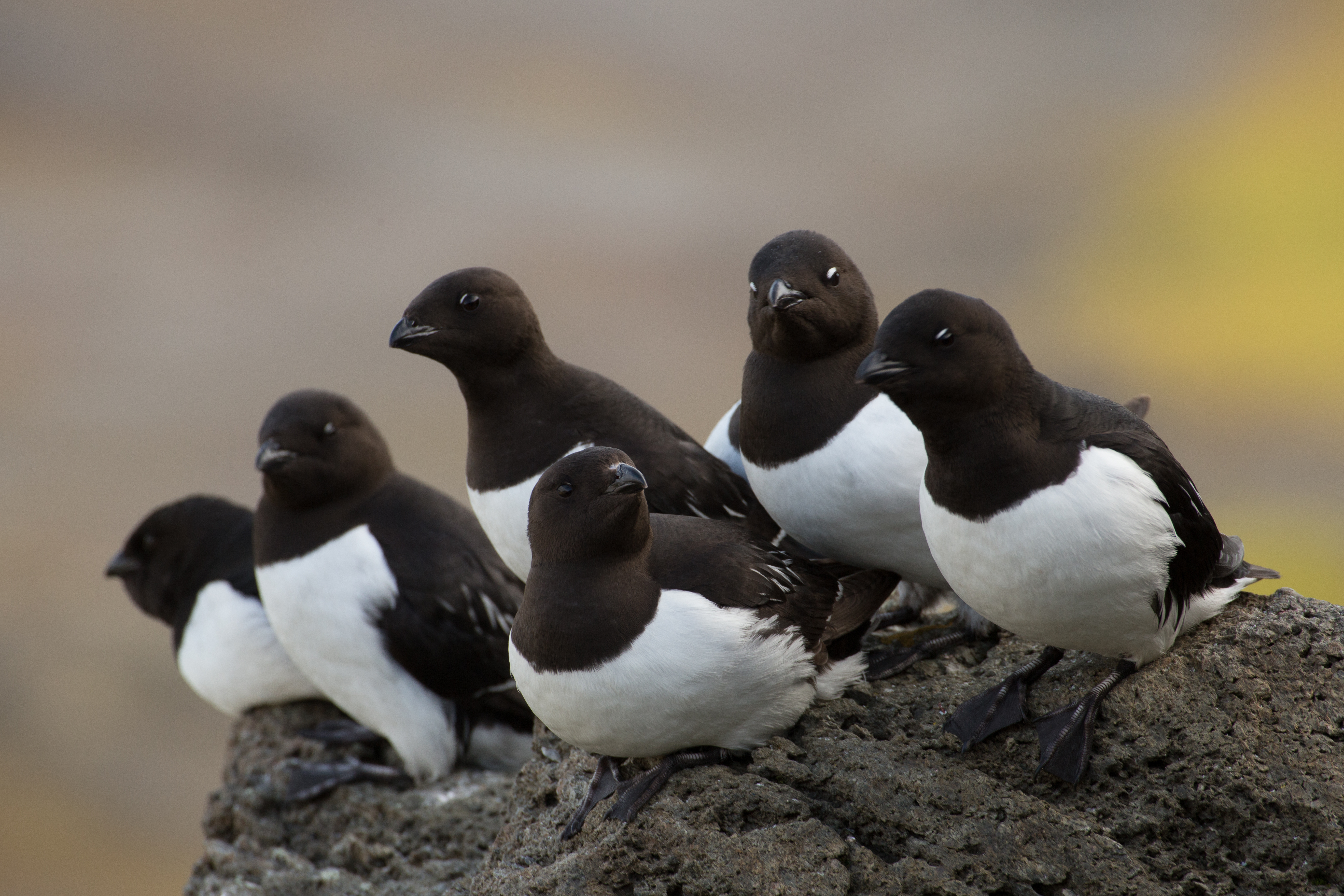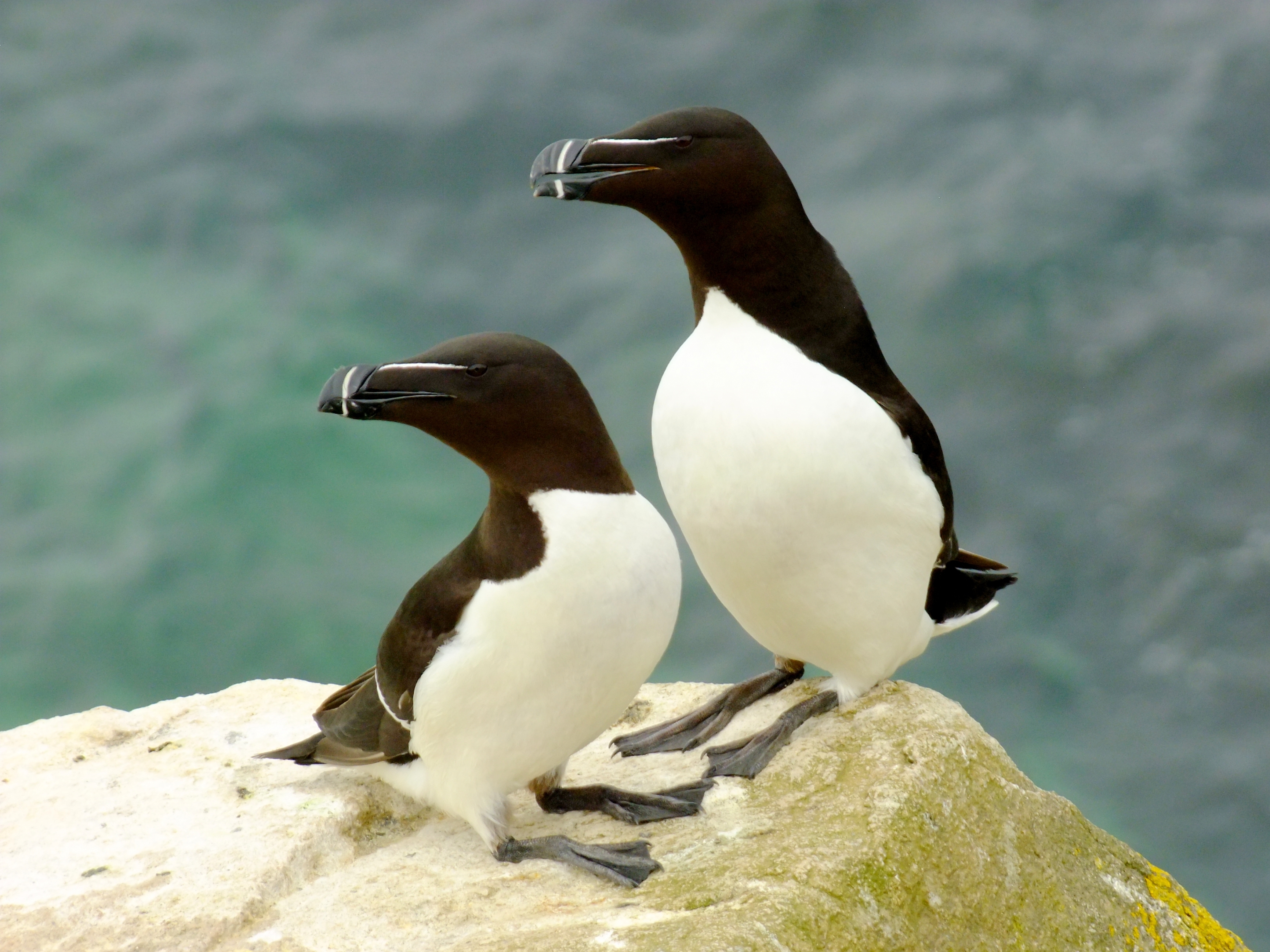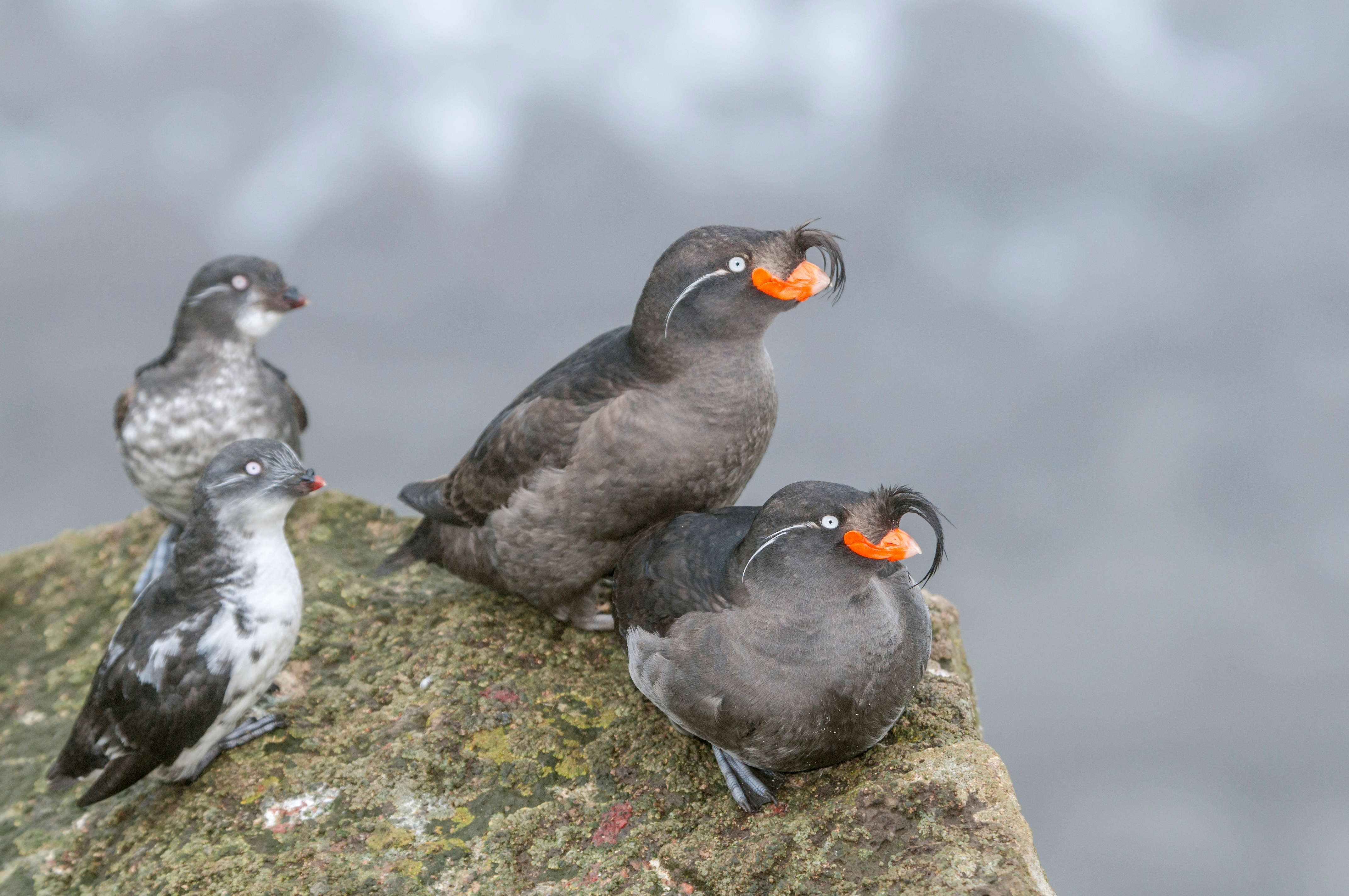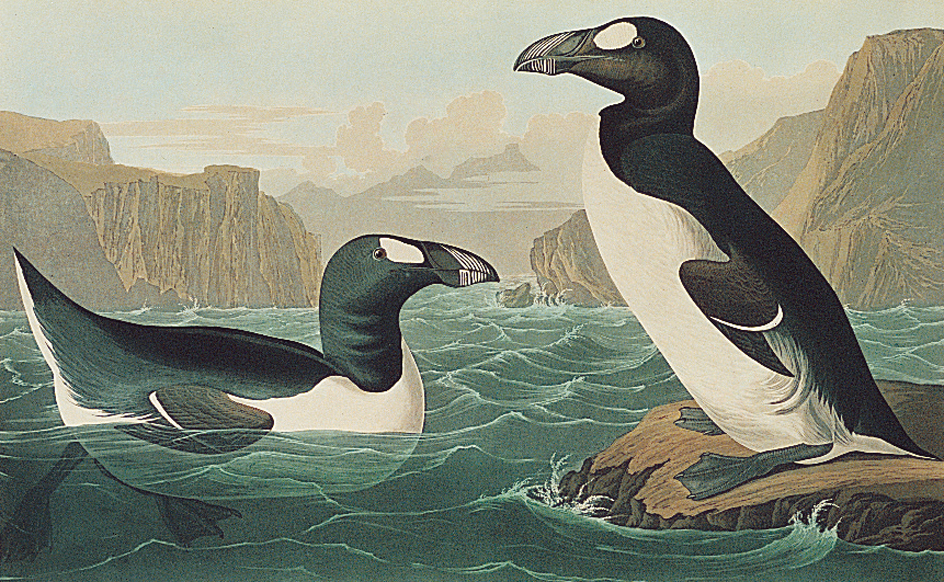Auk, << awk, >> a family of sea birds, includes auklets, dovekies, guillemots, murres, and puffins. Auks are also known as alcids. They live in the North Pacific, North Atlantic, and Arctic oceans. Auks look and behave somewhat like penguins, but the two types of bird are not closely related. Unlike penguins, auks can fly.


Like penguins, auks are excellent underwater swimmers. They propel themselves rapidly through the water with their strong wings, steering with their webbed feet. Auks feed on fish and other marine animals. They catch their food by chasing it in the water.
Auks have thick bodies and short legs. They range in size from 5 to 30 inches (13 to 75 centimeters) long. Most auks have black and white feathers, but some auks have gray or brown feathers. Certain species have brightly colored legs and feet. The bills of puffins become brightly colored during the breeding season.

Auks spend all the year except the breeding season at sea. They tend to nest in colonies of thousands of birds on rocky islands and return to the same nesting sites every year. Most make their nests among rocks, in burrows in the ground, or on ledges of cliffs. The female lays one or two eggs, which hatch in four to six weeks.

